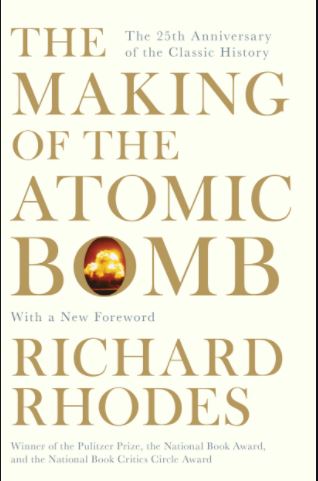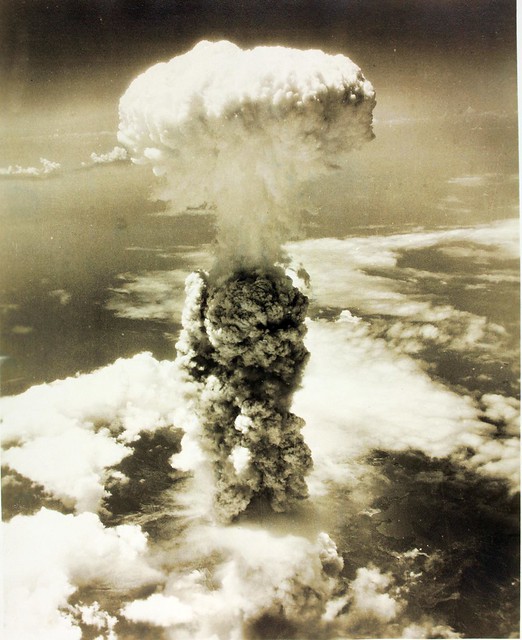
I just finished reading “The Making of the Atomic Bomb” by Richard Rhodes. It is certainly comprehensive. It starts at the start of the 20th century and ends of course with the bombing of Hiroshima and Nagasaki. It is very comprehensive as it surveys the development of modern physics and then gets into the huge industrial complexes built within just a few years with just one goal, to get enough fissionable material to make a bomb before the Germans, Japanese and Russians.
There are many interesting items in the book, such as:
- Albert Einstein was instrumental in getting the United States to think about an atomic bomb. He played no part in the development of the bomb because he was considered a security risk.
- USA believed the Germans were ahead in development because Germany was the center of Physics research. It wasn’t until after the war that they found out how far behind Germany was. The scientists working for the US knew that the basic science was well known and it was inevitable that other countries were going to develop the bomb and there was really not much that could be done to prevent it.
- When the Manhattan Project started, the basic science for the bomb was considered settled so the work was to develop the technology to apply the science and fabricate a bomb. The huge facilities at Oak Ridge, Tennessee and Hanford, Washington were there to get enough fissionable material to make the bomb. The basic plan was to make a bomb to test, and then after that drop bombs as fast as the fissionable material could be produced and fabricated into bombs.
So the physics is interesting and the technology challenging and so big parties when the test bomb at Trinity exploded. Rhodes does a great job sobering things up talking about the allied program of bombing residential areas in both Germany and Japan with mixtures of high explosives to break the houses and apartments and incendiary devices to make them burn. Rhodes also writes of the aftermath of the nuclear bombing including first person accounts of the horrific effects. Many people vaporized, others charred, others roasted alive. Many died of radiation sickness.
There is a lot of second guessing going on now about if we should have dropped the bombs or not but the Americans were concerned about the casualties if the allies invaded the Japanese Homeland. They looked at the battle of Okinawa where the allies lost over 12,000 lives and the Japanese had 110,000 soldiers killed. In addition 40,000 to 150,000 Okinawan lives were lost. The allies estimated they would lose 400,000 to 800,000 lives invading the Empire. The estimated deaths after the bombing was 90,000 to 146,000 at Hiroshima and 39,000 to 80,000 at Nagasaki, many if not most innocent civilians including children, mothers, and elderly people.
I am very interested in Atomic Energy, the Manhattan Project, and all things Cold War. I spent a big part of my life in New Mexico, home of Los Alamos Scientific Laboratory, Sandia Laboratories, and the Trinity Test site. My mother worked at the Hanford Site, source of our Plutonium in a clerical role after the war. I have other relatives who worked in military nuclear related industries. I think other boomers have ties to the Cold War era.
Anyway, the book is 838 pages and too me forever to read but there is a lot of information that is packed in there. I loved it. I got my Kindle version very inexpensively on during a promotion.




Scary subject that many (most?) of us prefer not to think about. We were “born and raised” in Eastern Washington, east of the tri-cities, so have always known lots of Hanford-related anecdotal stories. Much debate about long-term health effects on people in the state (downwinders). I doubt we’ll ever know the whole story.
It was a big thing during the cold war and baby boomer. I recall older baby boomers crawling under there desk.